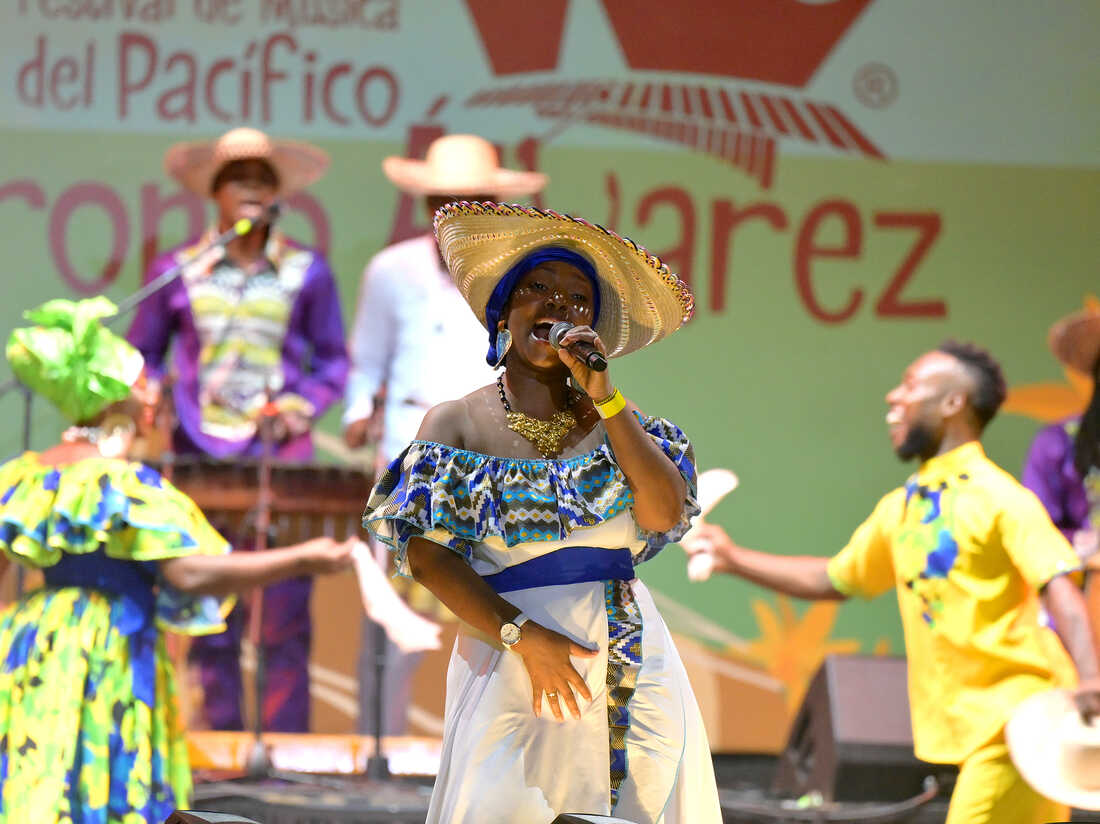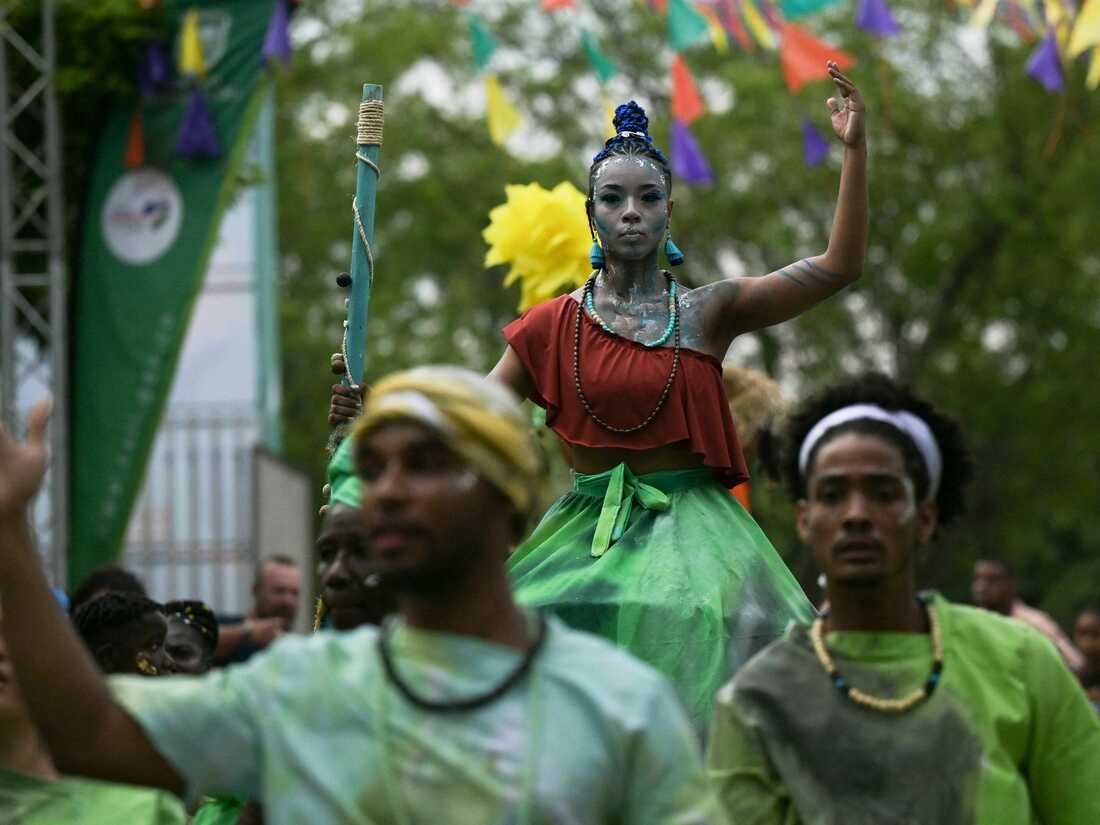
Nearly 500,000 people gathered in Cali, Colombia for the 27th annual Petronio Alvarez Festival. Nidia Góngora and her group Canalón de Timbiquí performed on the main stage.
Edward Lora
Edward Lora
Unidad Deportiva Alberto Galindo, a sports complex in Cali, Colombia, is home to what is affectionately called “El Petronio.” For the last 27 years, hundreds of thousands of people have traveled to the city to celebrate Afro-Colombian food, fashion, arts and crafts, a local moonshine, and most importantly, music.
The concert space feels like a giant street party, where people wave white handkerchiefs and drink Viche and lots of water. Everyone dances in small or large groups to the joyful, rhythmic and engaging music played on marimbas, drums, percussion instruments and voices of Afro-Colombian women and men from the Pacific coast.




People dance during this year’s Petronio Alvarez Pacific Music Festival in Cali, Colombia.
Joaquin Sarmiento /AFP via Getty Images
Joaquin Sarmiento /AFP via Getty Images
“What this festival has done in the past 27 years is to tell Colombia and the world that we are a multi-ethnic and multicultural country,” says Ana Copete. She has directed the festival since 2020. “We, as Afro-Colombians, have forged the identity of this country; we have built this country, hand in hand with others. And we deserve the dignity of our culture, not only as folklore but as a way of life.”
The festival has become the biggest source of income for musicians, cooks, artisans and vendors. Nidia Góngora, a world-renowned singer-songwriter from the small town of Timbiquí, Colombia, says dozens of small businesses, hotels and restaurants across the city benefit from the Petronio. This year, the festival generated nearly $1 million. “The positive impact generated by cultural activities, such as this festival, has to be considered fundamental in the construction of peace and growth of every society,” Góngora says.
But the festival also has critics. Addo Obed Possú is a 67-year-old luthier making marimbas, drums and other traditional instruments of the region. Possú claims the festival is becoming political, and the organizers now include big acts that have little to do with the musical culture, such as the popular salsa band Grupo Niche.
“It takes away funds from a Black musician, who comes from the deep territories of the Pacific Coast, to perform traditional music and be on the spotlight during the festival,” he says. “For example, with the amount of money they pay Grupo Niche, they could double the pay of each of the groups that come from the four participating regions.”
Remolinos de Ovejas is one of the 44 participating groups who came to Petronio from the remote town of La Toma, deep in the Cauca State. It’s a region racked by violence caused by guerrillas and paramilitary groups. (The group won second place in the ‘Violins from the Cauca’ music category.) One of the songs the group performed at the festival is called Historia de un campesino, a story of a peasant.
“The lyrics tell the story of a man who was displaced by the guerrillas,” says singer Carmen Lucumí. “He was a peasant; he had a family and had to move somewhere else because the armed groups killed his wife and children and burned down his house. He wrote a song based on what happened to him and gave it to us. We put music to it so that everyone could hear his story.”




Cultural Professor Manuel Sevilla says the festival symbolizes endurance and resistance, despite the region’s history.
Joaquin Sarmiento /AFP via Getty Images
Joaquin Sarmiento /AFP via Getty Images
Despite facing racism, inequality and violence, the Afro-Colombian people of the Pacific Coast have stayed resilient and creative, keeping their culture strong and vibrant.
“Part of the history of this region has been a violent one, a harsh one,” says Manuel Sevilla, a professor of cultural heritage at Universidad Javeriana in Cali. “And originally, if we go back to the slave trade days, of course, these are people who came here against their will and who had to endure many difficulties. I think you could look at Petronio Alvarez from both sides: one, it’s a symbol of endurance; it’s a symbol of resistance: ‘Even though they tried to deprive us of everything, here we are and this is what we have.'”
Sevilla says the festival is proof that Afro-Colombians’ music and culture have been thriving for centuries, and the Petronio Festival shows how creativity and hope continue to flourish here.
This post was originally published on this site be sure to check out more of their content.









